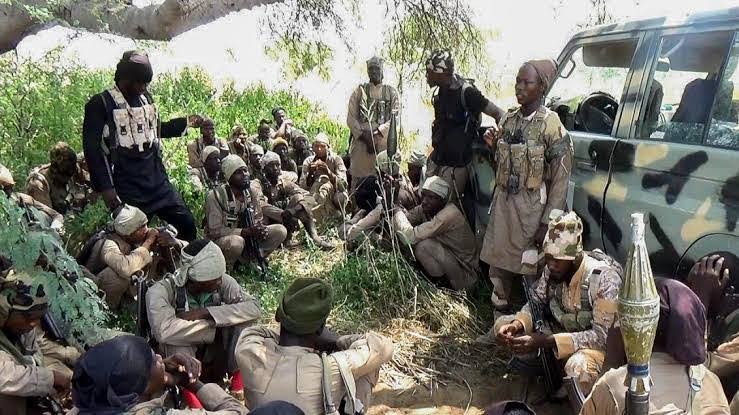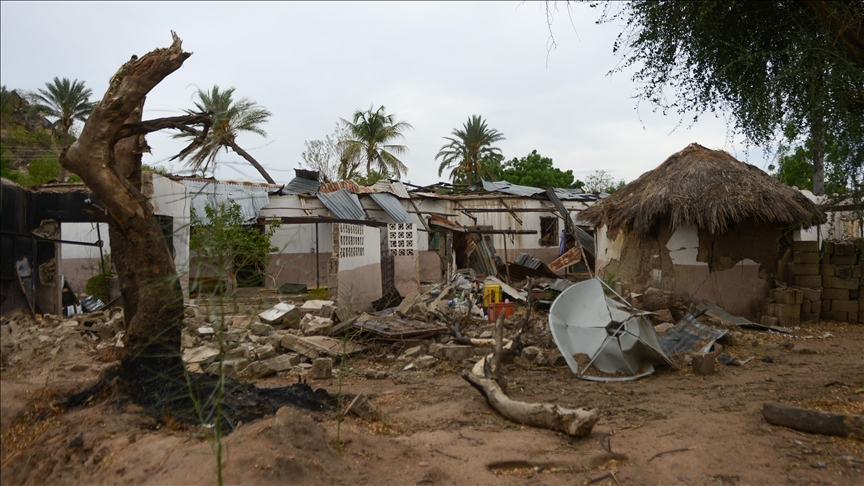Boko Haram Islamist militants launched a devastating attack on a northeastern Nigerian village, leaving at least 37 people dead and many more unaccounted for. The assault, which took place on Sunday afternoon, has once again highlighted the persistent threat of insurgency in the region.

According to a military official, the militants stormed into Mafa village in Yobe state on motorcycles, unleashing a barrage of gunfire on a local market. The attackers didn’t stop at gunfire; they proceeded to set shops and homes ablaze, causing widespread destruction and panic among the villagers.
Yobe state, along with two other northeastern states, has been at the frontline of a grueling 15-year insurgency that has claimed thousands of lives and displaced over 2 million Nigerians. This latest attack serves as a grim reminder of the ongoing humanitarian crisis in the region.
Yobe police spokesperson Dungus Abdulkarim provided insights into the possible motive behind the attack. According to Abdulkarim, the assault appeared to be retaliation for the killing of two suspected Boko Haram fighters by local vigilantes. This suggests a cycle of violence that continues to plague the area, with civilian populations often caught in the crossfire.
The brutality of the attack was evident in its execution. After the initial assault on the market and the arson of buildings, the militants pursued fleeing residents into the surrounding bush, where they continued their deadly rampage. “The terrorists killed many people, but we are yet to ascertain the actual number of casualties,” Abdulkarim stated, indicating that the full extent of the tragedy might not yet be known.

A military official, speaking on condition of anonymity due to lack of authorization to address the media, provided more details about the aftermath of the attack. The official, who accompanied the army’s commanding officer for Yobe to Mafa on Monday evening, revealed that the route to the village had been rigged with explosives, which the troops managed to defuse. This additional layer of danger underscores the sophisticated tactics employed by the insurgents and the challenges faced by security forces in responding to such attacks.
“We recovered 37 corpses and brought them to Babangida General Hospital,” the military official reported, providing a concrete figure for the confirmed casualties. However, this number may not represent the full toll of the attack.

Local residents fear that the actual death count could be significantly higher. Modu Mohammed, a resident of Mafa, estimated that the death toll could exceed 100. Mohammed’s chilling account suggests that several residents are still missing, with some corpses remaining unrecovered in the surrounding bush areas.
The attack on Mafa village is part of a larger pattern of violence that has characterized the Boko Haram insurgency. The group, whose name roughly translates to “Western education is forbidden,” has waged a campaign of terror in northeastern Nigeria and neighboring countries for over a decade. Their tactics have included mass abductions, suicide bombings, and raids on villages and military installations.
The Nigerian government and military have struggled to contain the insurgency despite numerous operations and declarations of victory. The persistence of attacks like the one in Mafa demonstrates the resilience of the militant group and the complex challenges involved in securing the vast, often remote areas of northeastern Nigeria.



